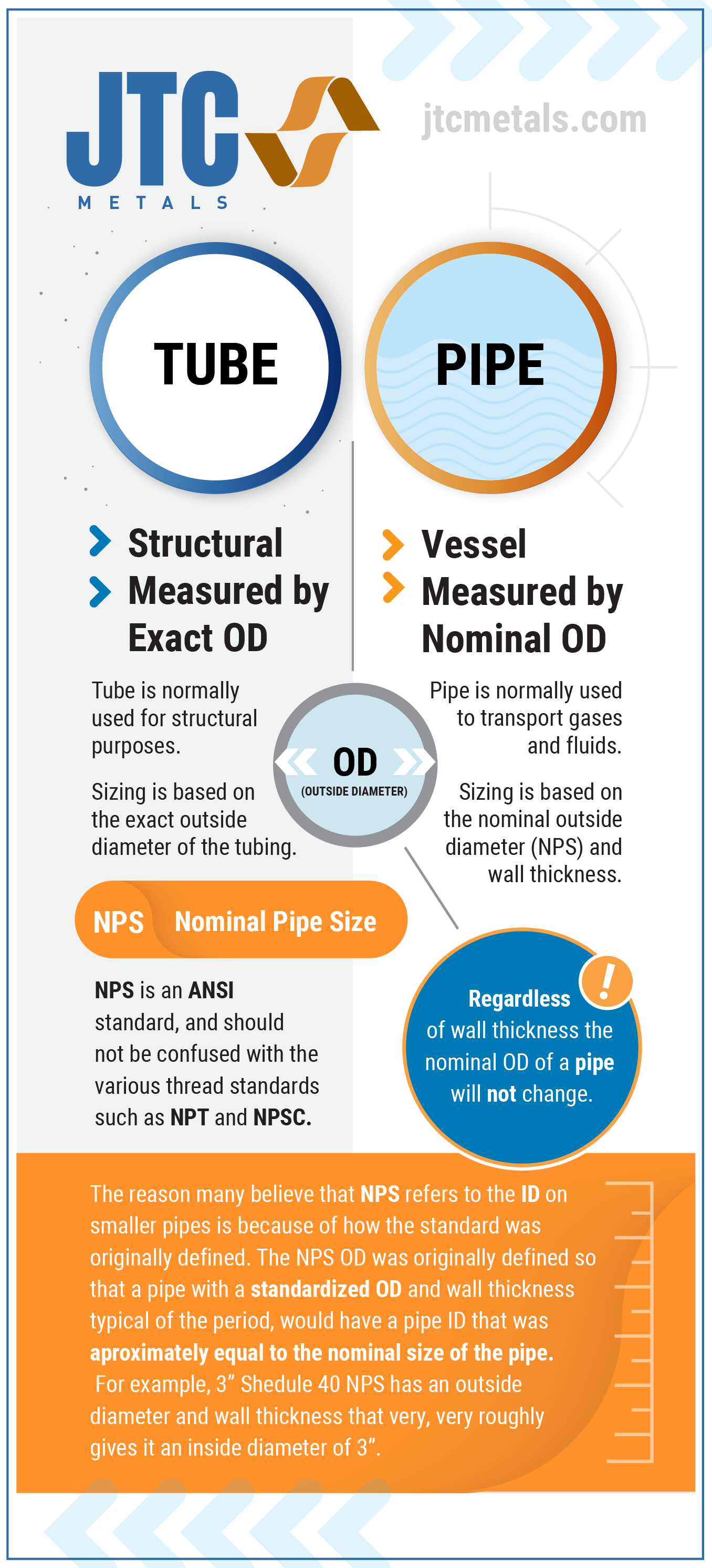You have probably heard the terms pipe and tube used interchangeably, and there's a good chance you aren't exactly sure what the difference is between them. Most people, even experts working in related industries, don't actually know. After all, how different can hollow cylinders get, and who really cares enough to go and look? Well, I had to know...
Even looking on the internet can lead to confusion, as many websites have mistakenly misidentified the real differences between them. Well, since I'm a know-it-all, let me explain as best I can what exactly differentiates tube and pipe. There's a nifty looking infographic you can share at the bottom.
Tubing
Tubing is generally used for structural purposes and the OD is an important and exact number. Tubing size is specified by OD and WT (wall thickness). The stated OD and measured OD are generally within very close tolerances of each other. Tubing is usually more expensive than pipe due to tighter manufacturing tolerances.
Interestingly, while the stated and measured OD’s of tubing are almost exact in most cases, copper tubing generally has a measured OD that is 1/8” larger than stated OD. As such, maybe it should be called copper pipe. However, stainless steel, aluminum, and steel tubing all have measured and stated OD’s that are exact or within a specified tolerance, usually in the thousandths of an inch (e.g. +/- 0.04").
Pipe
Pipes are categorized as tubular vessels used in pipeline and piping systems, and commonly transport gases and fluids. They are specified by “Nominal Pipe Size” (NPS) and Schedule (wall thickness). NPS is a size standard established by the American National Standards Institute (ANSI), and should NOT be confused with the various thread standards such as NPT and NPSC.
The manufacturing of Nominal Pipe Sizes from 1/8” to 12” is based on a standardized nominal outside diameter (OD) that is different from the measured OD. NPS pipe 14” and up have measured OD’s that correspond to the nominal size.
The reason many people, including plumbers, engineers, and others, mistakenly believe NPS refers to the ID on smaller pipes is because of how the standard was originally defined. The standardized OD was originally defined so that a pipe with a standardized OD and wall thickness typical of the period when it was established, would have a pipe ID that was approximately equal to the nominal size of the pipe. For example, 3” Schedule 40 NPS has an outside diameter and wall thickness that very roughly gives it an inside diameter of 3”. Regardless of the wall thickness the nominal OD of a pipe will not change.
The Takeaway
The long and short is that the NPS was defined so you would know approximately what ID you were working with and could count on the OD never changing. Tubing is defined so you know exactly what OD you are working with and the ID is based on whatever the wall thickness is.

Simply copy this code and paste it into your page to share with others. if you reference this article, please link back here, because you know, we did all the work of explaining it. :-)
<href="https://www.jtcmetals.com/" title="Stainless Steel Cut To Your Specs" img src="https://stainless.s3.amazonaws.com/tube-vs-pipe-the-difference.png" alt="Tube vs Pipe - The Differences Explained in Plain English" width="100%" style="border:none;" />